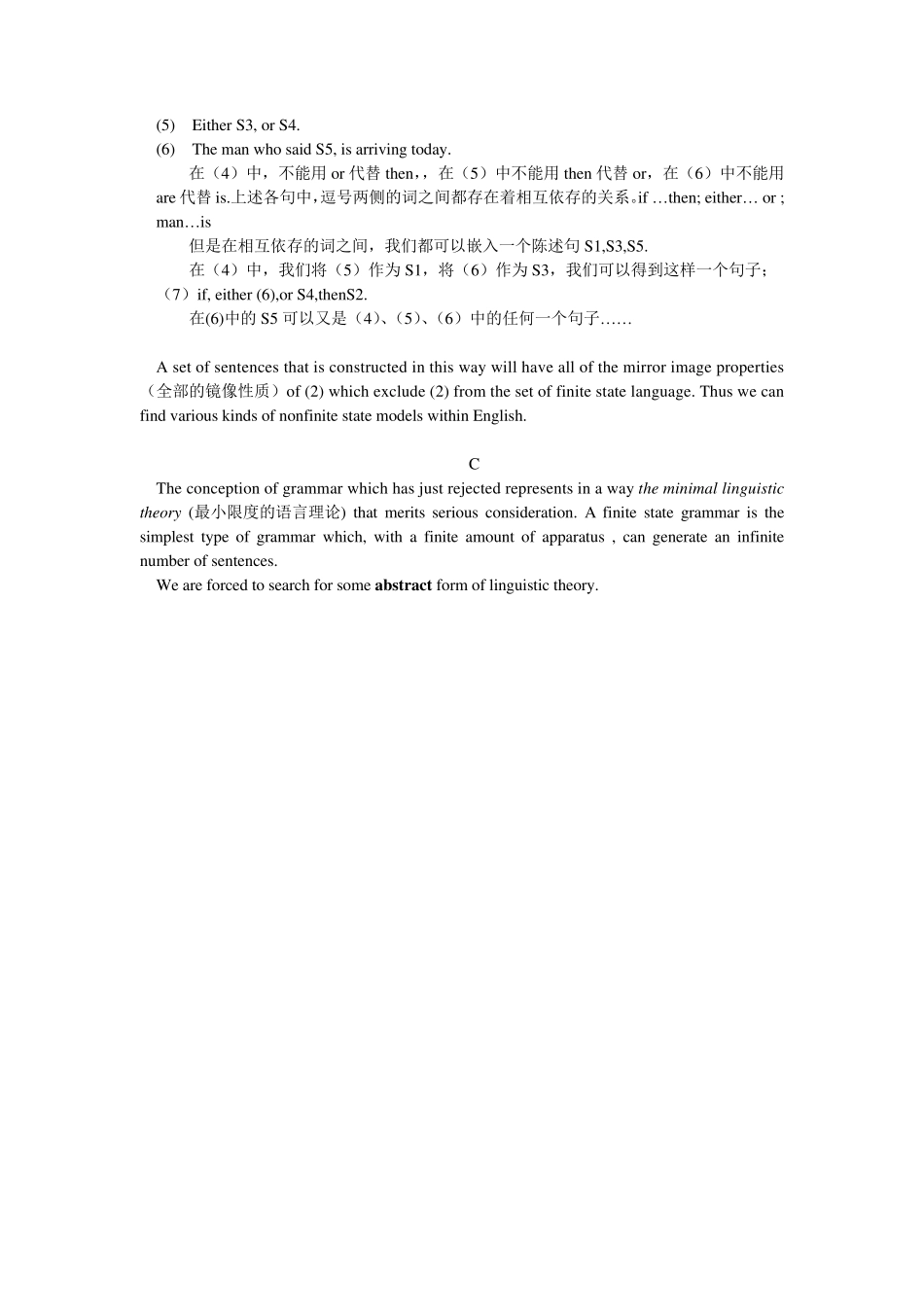3 AN ELEMENTARY LINGUISTIC THEORY 一个初级的语言理论 A Assuming the set of grammatical sentences of English to be given, we now ask what sort of device can produce this set (equivalently, what sort of theory gives an adequate account of the structure of this set of utterances). We can think of each sentence of this set as a sequence of phonemes of finite length. A language is enormously involved system, and it is quite obvious that any attempt to present directly the set of grammatical phoneme sequences would lead to a grammar so complex that it would be practically useless. 一种语言是一个极其庞杂的系统。如果想要把这个语言中符合语法的音位序列的集合直接描述出来,这种语法将会复杂而没有实际用处。 For this reason, linguistic description proceeds in terms of a system of “levels of representations”(多平面描述\代表平面) The linguist sets up such “higher level” elements as morphemes, and state separately the morphemic structure of sentences and the phonemic structure of morphemes. We ask what sort of grammar is necessary to generate all the sequences of morphemes that constitute grammatical English sentences, and only these. One requirement that a grammar must certainly meet is that it be finite. Hence the grammar cannot simply be a list of all morpheme sequences, since there are infinitely many of these. A communication theoretic model(通讯理论模型) for language——THE FINITE STATE GRAMMAR (有限状态语法) Suppose that we have a machine that can be in any one of a finite number of different internal states, and suppose that this machine switches form one state to another by producing a certain symbol (let us say, an English word). One of these states in an initial state(起始状态);another is a finial state(终端状态...


